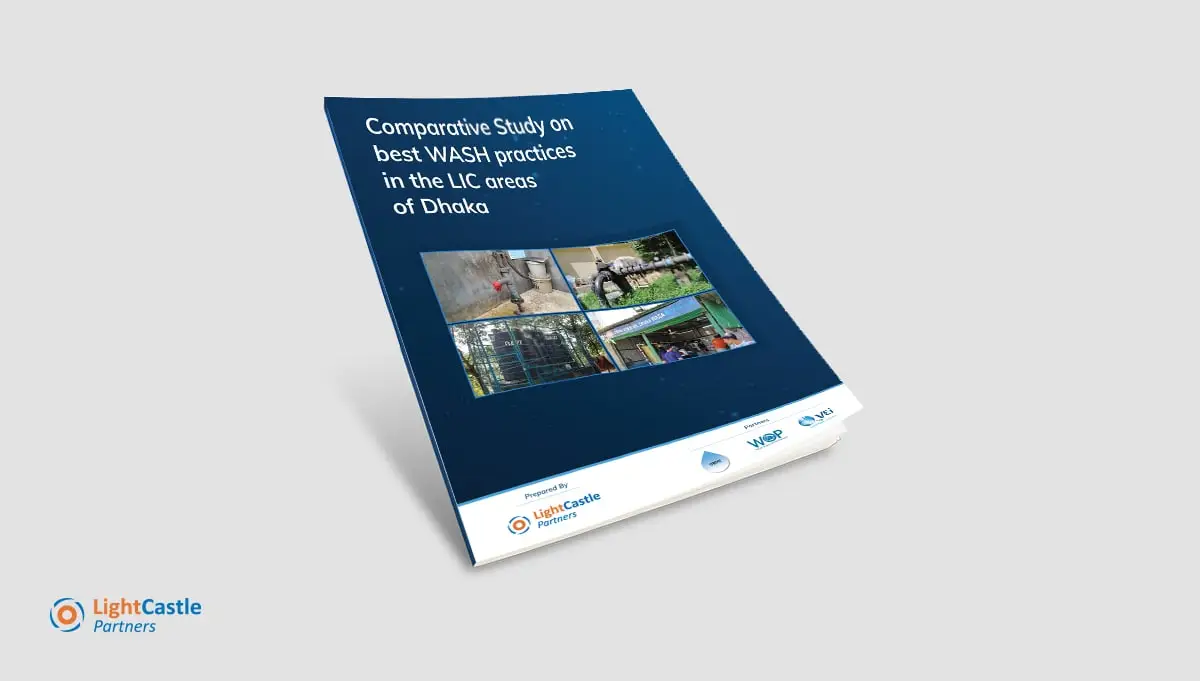GET IN TOUCH
- Please wait...

Dhaka is home to a reported 4 million slum dwellers spread over 5,000 Low Income Communities (LICs), as per data from UNICEF. Of these, nearly 700,000 slum dwellers in 435 listed LIC areas of Dhaka city are served by the Dhaka Water Supply and Sewerage Authority (DWASA) networks through legal water connections.
Recognizing the importance of selecting an optimal Water, Sanitation, and Hygiene (WASH) service delivery model to reach unserved populations and to optimize existing projects, and considering the dearth of comprehensive comparative research that investigated the feasibility and sustainability of WASH looking at the variety of WASH Services Delivery models for LICs that are being used in Dhaka city, this study was commissioned to LightCastle Partners (LCP) by the DWASA-VEI Water Operators Partnership (WOP2).
The objective was to identify the relative strengths and weaknesses of seven identified operational WASH service delivery models in Dhaka, for which the study adopted a mixed-methods research approach to map existing service delivery models, consult stakeholders, analyze model performance, and make recommendations to WASH sector stakeholders.
In the course of the research, LIC residents were surveyed and interviewed, and qualitative interviews were conducted with local water service providers and community leaders within seven selected LICs.
In addition to conducting Key Informant Interviews with prominent institutional stakeholders to develop a sector landscape, a shortlist of different WASH service delivery models in use across Dhaka city was derived.
The identified WASH service delivery models were consciously classified along two dimensions: technology being the first dimension and operational structure being the second.
Across the operational structure dimension, water service delivery models in Dhaka LICs can be divided into non-profit and commercial models, while the choice of technology varied between community-level connections both with and without storage, household-level connections (with storage), and water ATMs/vending machines. Classification along these dual dimensions led to the identification of the seven major models.
The WASH service delivery models evaluated in this study were found to have varying degrees of effectiveness in terms of performance. The study analyzed the different wash models from a qualitative and quantitative risk management perspective and evaluated the performance of each.
Furthermore, it concluded with a list of specific recommendations aimed at various WASH sector stakeholders, such as developing a central knowledge base on providing LIC WASH services, forming a multi-stakeholder plan for WASH in LICs, conducting independent and comprehensive social and environmental impact assessments, and much more.
Our experts can help you solve your unique challenges
Stay up-to-date with our Thought Leadership and Insights